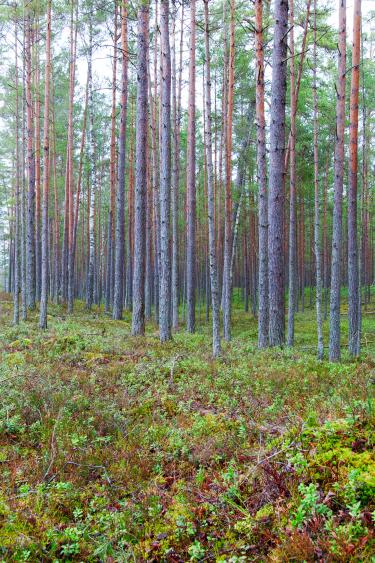Young Forest Dos and Don’ts
Keep these tips in mind as you care for your young forest.
Creating young forests has to be done right. Not every site is suitable for young forest, and not every approach is suitable for every site. Here are the dos and don’ts to keep in mind:
- Do your research. Consult your forester or a local forestry agency to find out if young forests are needed in your area, and what the best approach for starting a young forest (if it’s needed) would be in your woods.
- Don’t harvest in sensitive areas. Cutting on steep slopes, riverbanks or other sensitive areas can lead to erosion, flooding and loss of nutrients in the soil. Make sure to use the right harvesting method for your site.
- Do be careful of your wetlands. Make a note of the short-lived pools and ponds that pop up in your woods. They may not seem significant, but they’re important habitat for young frogs and salamanders. If you cut the trees that shade these wetlands, they may dry up too soon, stranding the still-developing creatures that live there.
- Do consider the value of your woods as they are. If you have high conservation value forest, stands of high-quality hardwood, or other special sites on your land, protect them. These landscapes are also valuable, both for landowners and for wildlife that need older forest. Consider other sites than these for your young forest.
- Do look at the whole package. The healthiest, most resilient forests have a mix of landscapes, tree types and ages. So work to make and keep a mosaic of ages in your woods. Plan to maintain 5 percent of your land in young forest for a set period of time, so that young forest cycles across your property. That will create habitat for both young forest-dependent and old forest-dependent wildlife on your land, provide you with sustained economic benefits, and make your woods healthier overall.
- Don’t be afraid to get help. Planning for and shaping your woods isn’t always easy, particularly if you’re making a big change to the landscape. But you’re not alone in this. Your county, district or consulting forester, your USDA Natural Resources Conservation Service (NRCS)or Cooperative Extension Service local office, and other natural resources professionals who know your region can guide you as you create young forest—and even help you find funding to support your efforts.
If you choose to create and keep young forest on your land, you’re embarking on a rewarding adventure. By providing rare and needed habitat for wildlife, a useful resource for your community, and new opportunities for enjoyment and recreation, you’re doing a lot of good—for our shared natural heritage, for yourself and for your woods.
Previous page
How can I get more tips?
It’s simple! Enter your email below.

